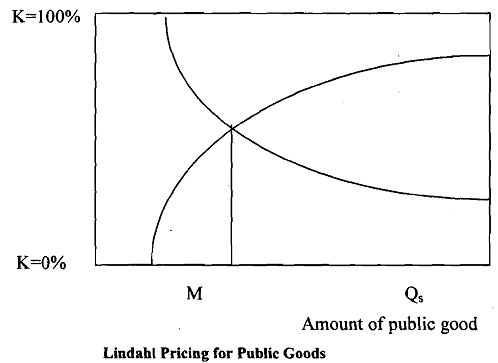The Lindahl Formula:
Erik Lindahl developed a price system that will support the efficient allocation of public goods. For that purpose, he viewed the sharing of costs by two customers of the public good as a supply-demand relationship, and worked out a pricing rule. We discuss his results in the following diagram. Assume that the vertical axis measures K or the fraction of unit cost contributed by A. Given the unit cost C and assuming it to be constant, kc is the price paid by A, and DA is her demand schedule for the public good S.
Since B's price equals (1 - k)C, and since both share the same quantity of S, B's demand curve drawn with regard to k is given by DB. Individual A may then look upon DB as showing the price at which various quantities of S are available to her i.e., as a supply schedule for the public good which confronts. her. B similarly may regard D, as her supply curve. The fraction of the price which both are willing to pay [k for A and (1 - k) for B] adds to I at the intersection of DA and DB, at output OM.
